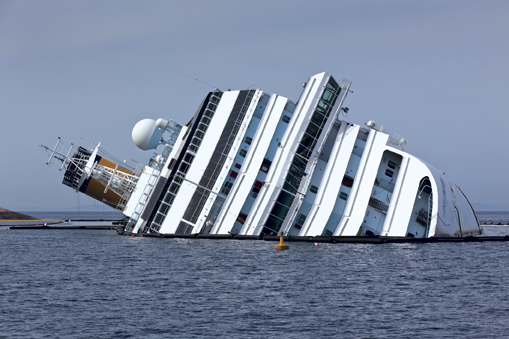Risk Management
Culture and lack of discipline allow hazardous incidents to occur in the workplace every day
I often wonder why some employers have excellent health and safety results, but others in the same industry, doing the same thing, do not. Why are some work comp experience mods 40% below average, while others are 40% above? It could be that their workplace is infected with something called normalization of deviance.
This is a term coined by Diane Vaughan, a sociologist at Columbia University. According to Vaughan, it describes people within an organization who have become so accustomed to a deviant behavior that they no longer consider it as deviant, despite the fact that they far exceed their own rules for the elementary safety. Vaughan’s research showed that when managers are faced with conditions of uncertainty, they tend to fall back on rules. And by doing so, they expand the boundaries of risk one more time, which can create a disaster.
Getting rid of normalization of deviance isn’t easy; it takes strong leadership. Start at the top, and then communicate to everyone in the organization.
In 2012, the Italian cruise ship Costa Concordia capsized and sank after striking an underwater rock off the coast of Tuscany, Italy, resulting in 32 deaths. The ship’s captain had consciously deviated four miles off the approved course to within 1,000 feet of the shoreline. It was an ill-fated decision. Experts believe the total cost of the disaster, including victims’ compensation, refloating, towing, and all scrapping costs, was approximately $2 billion, more than three times the $612 million construction cost of the ship.
Why did the crew participate in this risky maneuver? It could be that they had done it before and nothing bad had happened, until something tragic did happen, and by then it was too late.
It’s not uncommon for people to take risks, like riding a motorcycle without a helmet or driving a car without wearing a seatbelt. Maybe they sneak a quick peek at a text while driving. According to the National Safety Council, driver distraction has joined alcohol and speeding as leading factors in fatal and other serious auto injuries.
This might explain why employees often take a risk that, on the surface, might seem extreme, but over time becomes normal. Too often this behavior is tolerated because production takes precedence over safety. A shortcut here or there is tolerated to make a production deadline.
An example would be a maintenance worker changing a light bulb while standing on top of a 6-foot ladder. He knows he should not be standing on top of the ladder, and that it would take only five minutes to get the 8-foot ladder that is needed to do the job safely, but he wants to get the job done more quickly.
Perhaps a worker reaches into a machine that is between cycles in order to quickly remove a part that is stuck, without using the lock-out tag-out procedure. He has done it before and gotten away with it. But this speed-over-safety behavior is a disaster waiting to happen, not to mention a massive risk management issue.
Culture and lack of discipline allow incidents like this to occur in the workplace every day. When there is a fatality in Michigan, I get an email describing the incident, and in most cases each of these unfortunate accidents is preventable. There have been 18 so far this year. Recently a lake weed control employee fell out of the boat and another worker went in to rescue him. He saved his fellow employee, but sadly he drowned while doing so. Neither of them had on their required life preserver.
The list seems endless: A worker falls 25 feet through an unprotected skylight without fall protection; a maintenance worker is killed inflating a split rim tire without a tire cage. All of them are accidents that likely could have been avoided if safety had taken precedence over productivity.
In order to inoculate a workplace from normalization of deviance syndrome, it’s important to do a complete risk assessment. You need to take the time to identify risk by using a checklist specific to that particular industry. I also recommend that risk advisors do a work-site walk-around. If you are not comfortable doing these, tag along with the loss control expert from the insurance company and you will soon know what to look for.
Get permission from management to interview several employees and ask them what they think the risk issues are. You will be amazed at what you will learn, and then you can add these issues to your list of recommendations to management.
Next, analyze data such as OSHA logs, OSHA violations, and loss runs, which will show patterns that need to be controlled. For example, if you see that back injuries are frequent, inquire about the employer’s hiring procedure and suggest they implement pre-employment physicals as well as the use of lift training programs.
Getting rid of normalization of deviance isn’t easy; it takes strong leadership. Start at the top, and then communicate to everyone in the organization. Bottom-line: Everyone needs to be held accountable.
The author
Randy Boss is a Certified Risk Architect at Ottawa Kent in Jenison, Michigan. As a Risk Architect, he designs, builds and implements risk management and insurance plans for middle market companies in the areas of human resources, property/casualty & benefits. He has 40 years of experience and has been at Ottawa Kent for 35 years. He is the co-founder of OSHAlogs.com, an OSHA compliance and injury management platform. Randy can be reached at rboss@ottawakent.com.






